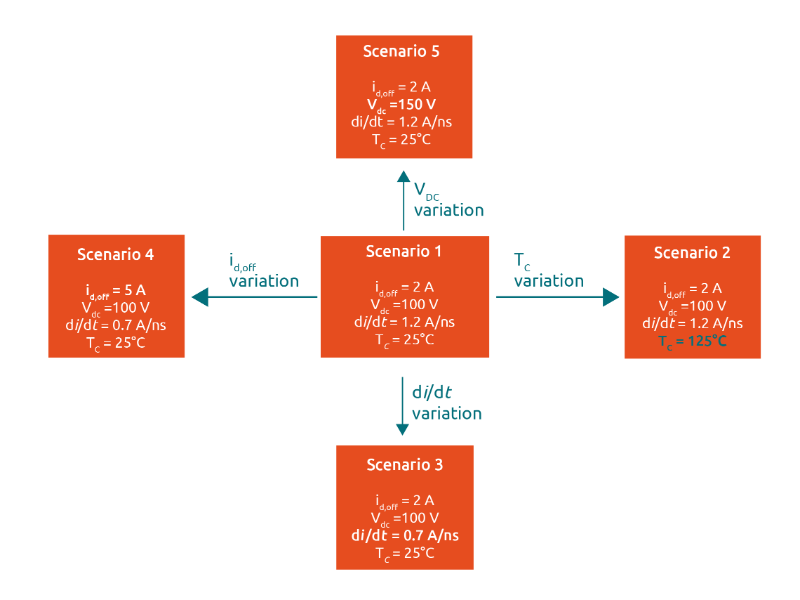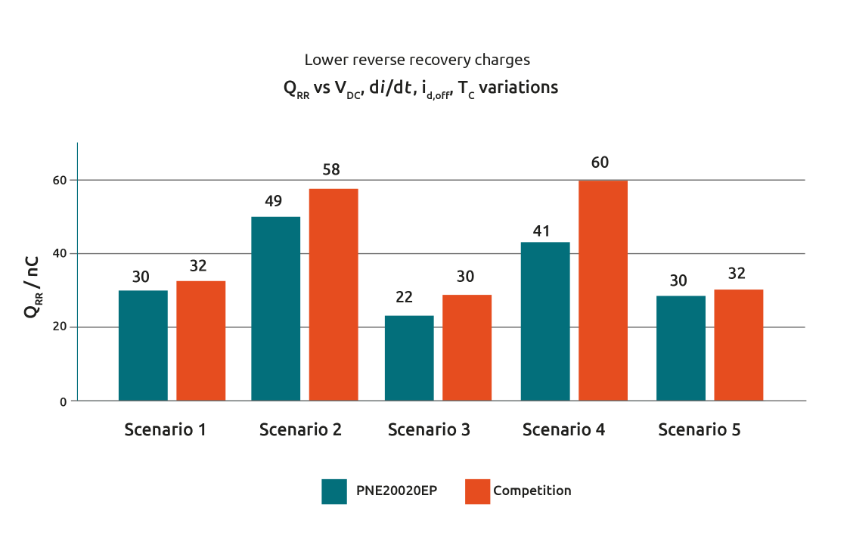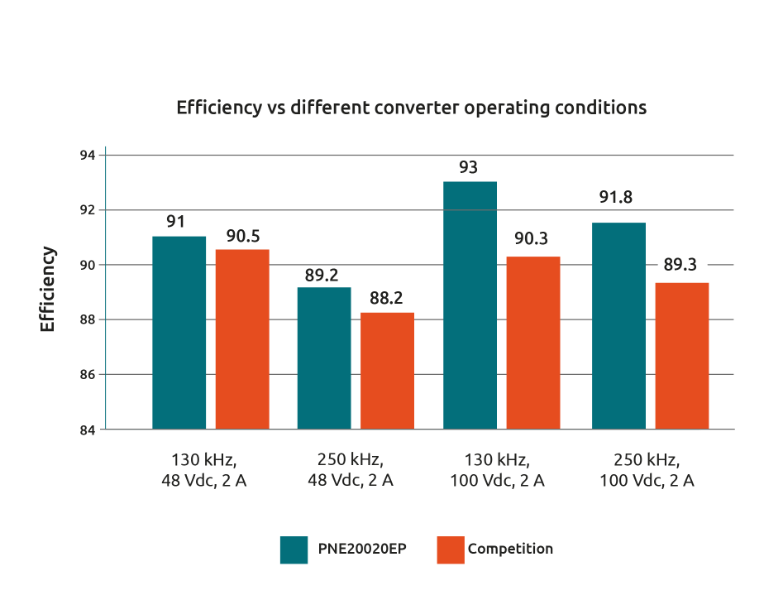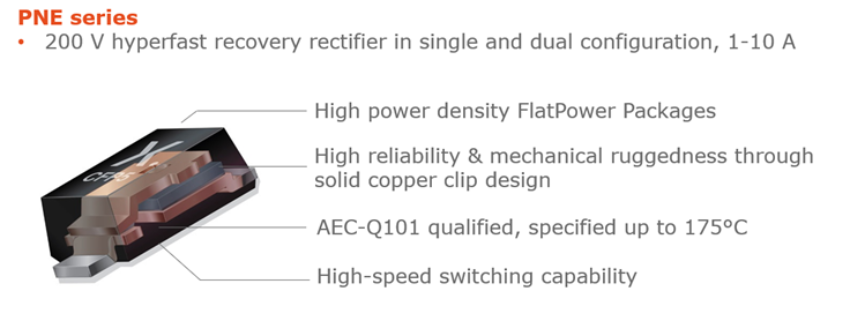Engineers can optimize the efficiency of their power designs by carefully selecting the correct type of recovery rectifier diode. For the 200 V domain, Nexperia’s high-end hyper-fast PNE series can make the difference in switch-mode power supplies. In this article, a DC-DC converter is used to demonstrate the difference the diode could make.
Minimizing loop inductance
For DC-DC converter designs, the power diode was located on the bottom side of the PCB and the MOSFET on the top, taking extra care to ensure an extremely low commutation loop inductance. An extra low-inductive, high-bandwidth current shunt has been inserted and additionally unnecessary leads have been removed to minimize the extra inductance of the current shunt as much as possible. This setup could then be used to determine the reverse recovery performance in a double-pulse configuration. The design could be easily turned into a DC-DC converter whose efficiency could then be measured, thereby allowing the reverse recovery behaviour and the efficiency impact of the diodes to be directly correlated.

Double pulse analysis
In a double-pulse analysis, the performance of Nexperia’s 200 V hyper-fast rectifier technology was compared to that of a similar device (which had the same ratings and the package outlines) from a leading competitor. Both devices were required to switch off a current of 2 A for this test. While the di/dt of both diodes was the same, the reverse recovery of Nexperia’s PNE diode showed better switching performance, with both the reverse recovery charge Qrr and the reverse peak current being lower compared to the competing device. The same results were observed even when the converter conditions were varied to encompass various operation conditions of the DC-DC-converter (Figure 1). Test variables included:
- case temperature
- di/dt
- diode turn-off current
- DC link voltage
For every scenario, Nexperia’s PNE device had a lower reverse recovery charge than the competitor’s (Figure 2).

Several efficiency sweeps were performed with the designed DC-DC converter to determine how this performance improvement in Qrr would benefit real-world applications (Figure 3). Different test scenarios for the efficiency tests were chosen. The DC-DC converter operated at 48 V DC link voltage with 48 W output power and 100 V DC link voltage with 100 W output power at two different switching frequencies (130 kHz and 250 kHz). The lower reverse recovery of Nexperia’s hyper-fast diode improved the converter’s efficiency over the whole range of operating conditions up to a maximum absolute efficiency improvement of 2.7%. It clearly demonstrates the superior performance of Nexperia’s PNE 200 V diode family.


Nexperia’s PNE series of diodes is available in single and dual configurations with several current options. The parts are housed in Nexperia’s high-power-density FlatPower packages. They are AEC-Q101 qualified and specified up to 175 °C, making these parts an excellent choice for efficient switching and power conversion in automotive, industrial, and consumer applications.
When designing for high-end switching performance and high efficiency in power conversion applications, Nexperia’s high-end hyper-fast PNE series can make a big difference.
For further information, visit nexperia.com/recovery-rectifier.